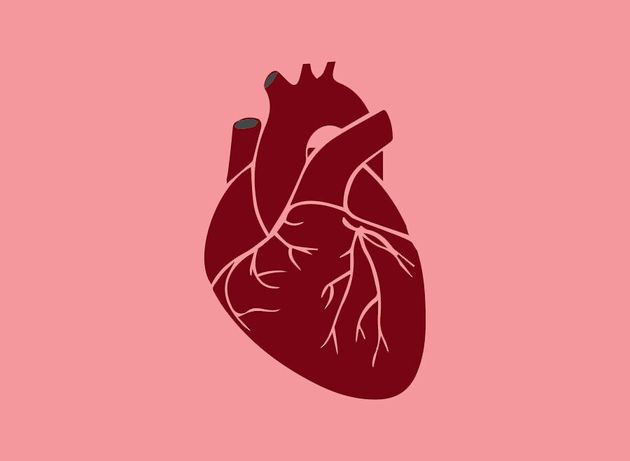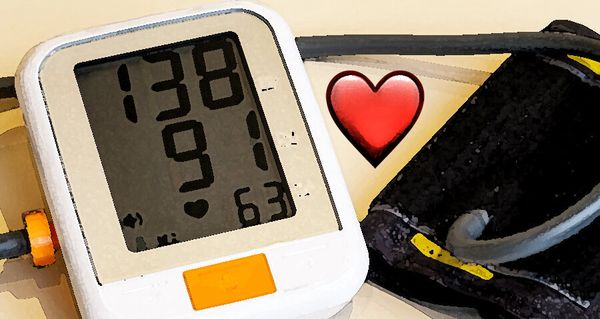High cholesterol has been linked to serious health problems – but many of us assume it’s something we only need to worry about when we get older. And that’s where we’re wrong.
Cholesterol should be on everybody’s radar – scientists have said people as young as 25 years old should be getting their levels checked so they can begin to mitigate the risk of heart disease.
But what actually is cholesterol? How does it impact us? And what can we do to lower it and stay healthy? We asked Heart UK, Bupa and the British Heart Foundation (BHF) to break it down into bite-size chunks.
What is cholesterol?
Cholesterol is a type of fat, also known as a lipid, which is made in the liver and also found in some foods we eat. We all need some cholesterol in our bodies to stay healthy, but having far too much has been linked to problems later in life, including heart disease – which can lead to heart attack – and stroke. It has also been linked to vascular dementia.
Cholesterol has three main jobs: it forms part of the outer layer of all your body’s cells; it helps keep your bones, teeth and muscles healthy; and it helps make bile, which digests the fats you eat.
Good and bad cholesterol – what’s the difference?
There are different types of cholesterol which tend to be lumped into two categories, says Chris Allen, head of healthcare for nationwide cholesterol charity, Heart UK – the good and the bad.
Non-HDL (non-high density lipoprotein) is considered “bad” cholesterol, as it can contribute to fatty buildups in arteries, which can eventually lead to health issues. Meanwhile HDL (high density lipoprotein) is seen as “good” cholesterol. Experts believe it helps unclog fatty buildups in the arteries, carrying it back to the liver – think of it like a friendly bouncer removing someone who’s drunk from a nightclub.
While most people tend to think the higher your HDL levels, the better, evidence shows if your HDL is too high, it can start to act like bad cholesterol, says Allen.
How is cholesterol measured?
High cholesterol occurs when you have high levels of non-HDL and HDL floating around in your body – yes, it’s made up of “good” and “bad” cholesterol.
It’s measured in millimoles per litre of blood. The parameter in the UK tends to be 5mmol/L – anything under that is considered normal, and anything over that is a red flag.
Your cholesterol level is the total of your HDL and non-HDL added together. So if your HDL is 1mmol/L and your non-HDL is 4mmol/L, your cholesterol level is 5mmol/L.
The breakdown of the two different types of cholesterol in this measurement is important, says Allen, because if your total score is on the borderline, you can analyse it more closely to see if there’s a cause for concern. If most of the 5mmol/L is made up of non-HDL, for example, it could be a red flag and you might require treatment. Whereas if you have more good cholesterol (HDL) and not much bad cholesterol (non-HDL), and are otherwise well, there would be less cause for concern.

What causes cholesterol levels to rise?
“Bad” cholesterol builds up as a result of eating fatty foods, not exercising enough, being overweight, smoking and drinking alcohol.
Foods high in saturated fats, therefore contributing to higher cholesterol levels, include: butter, coconut oil, cakes, biscuits, fatty meats, sausages, bacon, cured meats, cheese, pastries, cream, ice cream and chocolate.
For some people, high cholesterol can be genetic, so if your parents, grandparents, or aunts and uncles have high cholesterol or heart problems, you may do, too – and it’s wise to get tested.
Familial hypercholesterolaemia (FH) is one of the most common inherited conditions, caused by a problem with genes. This condition is the reason why Heart UK is calling for toddlers to be screened for high cholesterol, as people with FH will have very high levels from a young age, which can result in heart problems in their 20s and 30s. “We used to think the prevalence [of FH] was about one in 500,” says Allen, “but we’re starting to realise that actually it’s more like one in 250 – and it could be even more.”
Who should be tested?
High cholesterol typically does not cause any symptoms, states NHS Choices, so you can only find out through a blood test.
People aged 40 to 74 years old have the NHS Health Check, which involves a cholesterol check. They should receive a letter from their GP or local council inviting them for one every five years. Alternatively, people can call their GP to book one in.
Currently, people under 40 only have their levels checked when they go for blood tests, usually as a result of illness. If you’re concerned about a family history of high cholesterol or heart problems, you can request to have a blood test through your GP. “You don’t need to wait until you’re 40 to get it checked,” says Allen. “We need to know if FH affects you and treat you as early as we possibly can.”
One argument for testing people earlier is that artery clogging could be prevented, explains Barbara Kobson, senior cardiac nurse at the British Heart Foundation (BHF): “It can take many years for arteries to fur up in response to a high level of ‘bad’ cholesterol. If people as young as 25 do get their levels checked and they’re found to have high cholesterol, they can be started on medication and other risk factors can be addressed by their GP.”
What can you do if you have high levels?
A study in the Lancet journal suggested that halving levels of bad cholesterol could cut cardiovascular risks fourfold, so it’s definitely worth taking action.
There are plenty of lifestyle changes you can make to reduce cholesterol levels. The main ones are eating healthily – lots of fruit, vegetables, oily fish and wholegrains, while reducing the number of saturated fats you consume – and doing more exercise.
Dr Arun Thiyagarajan, medical director for Bupa Health Clinics, urges people to exercise for at least 30 minutes, five times a week. “If possible, try to do more vigorous activity at least two of these days,” he says.
There are groups of foods that have been shown to help lower cholesterol, says Allen, pointing to olive-based oils and rapeseed oils, fresh fruit and vegetables, avocado, nuts and oats. He adds that while some people think a vegan diet reduces cholesterol, it depends on what you eat.
Plant-based diets consisting mainly of fruit, vegetables and wholegrains are great, “but the issue with a lot of plant-based products is what they replace those meat products with”, he adds. So it’s worth keeping an eye on how many saturated fats you’re consuming.
For some people, changing diet and exercise levels will reduce their cholesterol levels to a normal amount, but for others, they may need to take medicine (statins), too.
If you’re worried about your cholesterol and want to get checked, speak to your GP.






